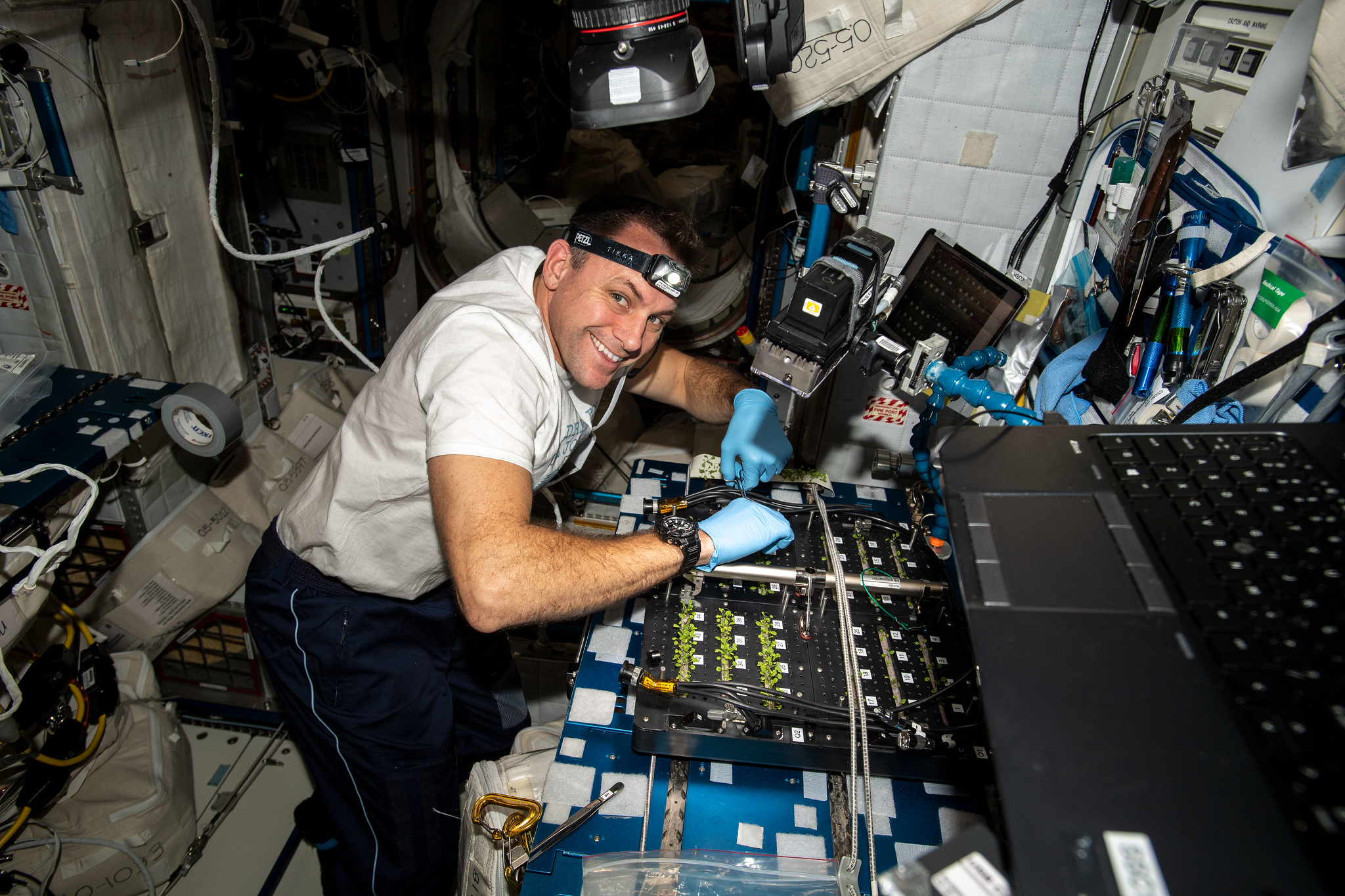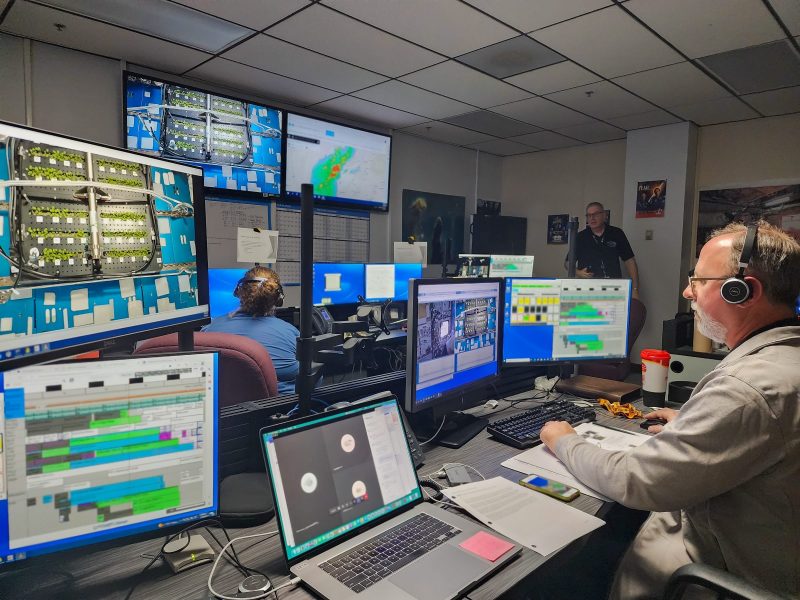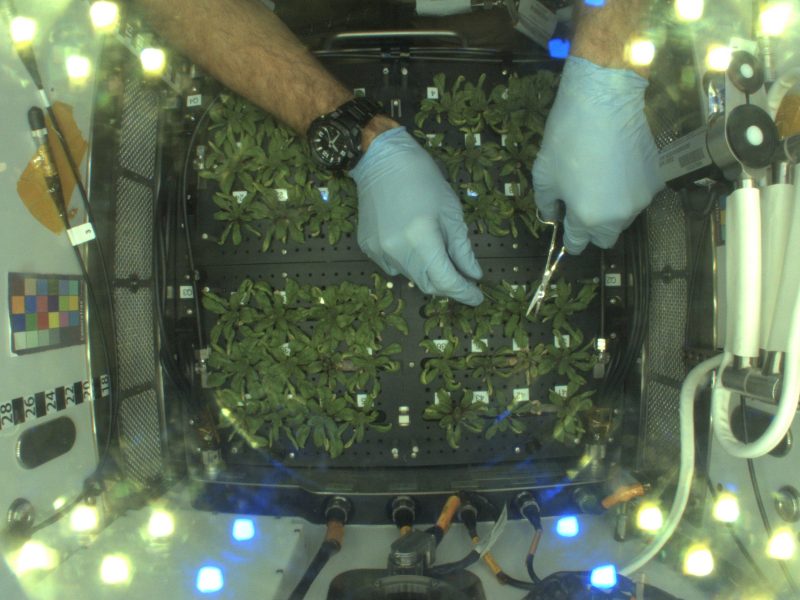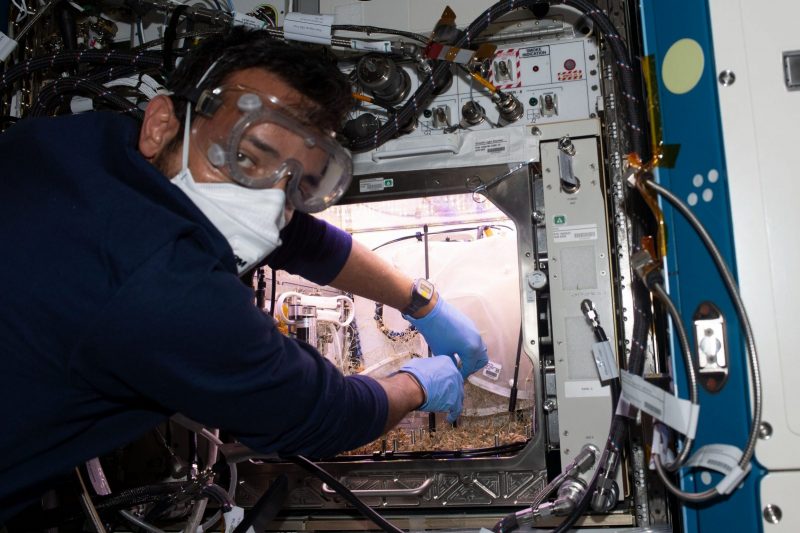
The ability to have and grow fresh crops in space will be a critical capability for deep space exploration missions, but it also provides benefits to life on Earth.
Onboard the International Space Station (ISS), NASA astronauts frequently become space gardeners as they conduct experiments using NASA’s Advanced Plant Habitat (APH), an automated plant growth facility managed by Redwire. The latest experiment using APH is the Plant Habitat-03 experiment (PH-03(A)), which launched on Northrop Grumman’s 18th commercial resupply mission to the ISS on November 7, 2022, from Wallops Island, Virginia. Led by researchers from the University of Florida, PH-03 will investigate changes to how genes are expressed in plants exposed to the stresses of spaceflight and whether these changes are passed to later generations. The study of how an environment like spaceflight affects the way in which genes work but without changing the underlying DNA is called epigenetics. PH-03 seeks to understand whether or not spaceflight-induced epigenetic effects are inherited from one plant generation to the next. This could allow researchers to develop new strategies for adapting crops for growth in marginal and reclaimed habitats on Earth and help predict the long-term effect of spaceflight on multiple generations of plants that will be necessary for deep space travel.
The Garden Begins
Plant Habitat-03 uses the Arabidopsis thaliana plant, a very small flowering plant commonly used for research, which astronauts grew from seed to seed on-orbit. After initial growth success from seedling to established plant, teams from Redwire’s facility in Merritt Island, Florida, supported NASA astronauts with a “thinning” exercise. This activity removed some carefully selected plants, thereby allowing the remaining plants to experience optimal fertilizer and light conditions to reach maturity.

One Leaf at a Time
After growing the majority of its leaves, astronauts completed a leaf harvest. The Redwire team guided the astronauts as they cut one leaf from each of the 48 plants for collection.
“Taking one leaf is like taking a blood sample from you,” said Redwire’s Dave Reed, Redwire’s Florida Spaceport Operations Director. “We don’t need all your blood to characterize what’s going on, just a bit.”
These leaves were preserved and sent back to Earth to track any changes in gene activity within each individual plant as they grow and reproduce on-orbit.

Final Harvesting
As a final harvest, astronauts needed to capture as many seeds as possible. However, Arabidopsis seeds are very small, less than one millimeter in diameter. In order to keep seeds from floating away, Redwire engineers developed mesh bags that were fine enough to capture the seeds yet still allowed the plants to obtain the light and carbon dioxide necessary to grow. At the end of its on-orbit life, astronauts used scissors to cut the plants’ stems and zip the bottoms of the bags shut to trap the majority of the seeds, pods, and stems inside. The plant tissue was dried within the mesh bags for an additional three weeks on-orbit before being refrigerated and returned to Earth.

Back on Earth and Future Research
After returning to Earth, researchers will process the seeds for sowing on a later flight to the ISS, beginning the process again with the Plant Habitat-03(B) experiment. For this new flight of PH-03, APH will grow half spaceflight-grown seeds and half ground-grown control seeds. This will provide the best possible direct comparison of the heritable epigenetic material, allowing scientists to apply the results of this experiment to new adaptation techniques for crops on Earth or for deep space missions.
Learn more about this experiment and other investigations flown when it launched in this blog.
Learn more about Redwire’s Advanced Plant Habitat technology at this link.




